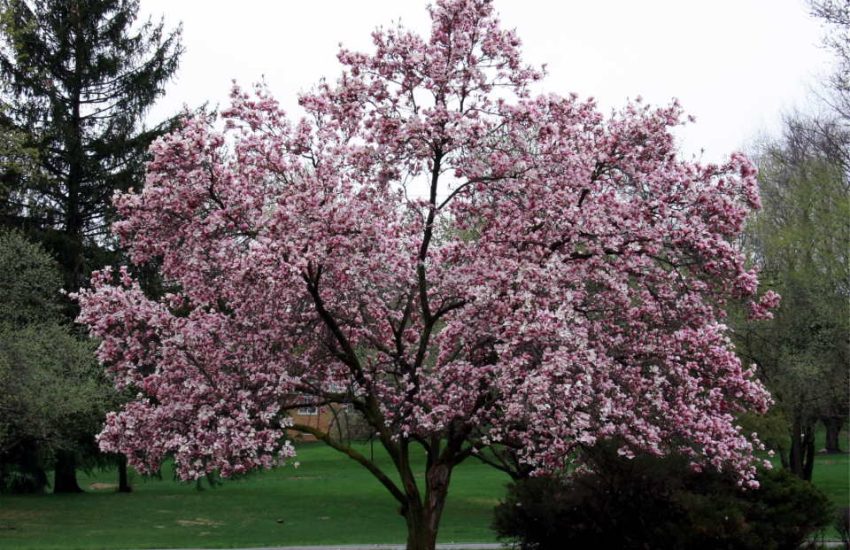How to Grow a Lime Tree: A Comprehensive Guide
Lime trees are a popular choice for gardeners who want to grow their own fruit. These trees are relatively easy to care for and can produce a bountiful harvest of limes each year. However, growing a lime tree does require some attention to detail and a bit of patience.

To start, it’s important to choose the right location for your lime tree. These trees thrive in warm, sunny climates and prefer well-draining soil. If you live in an area with cooler temperatures, you may need to grow your lime tree in a container that can be moved indoors during the winter months. Once you’ve chosen your location, it’s time to plant your tree. Lime trees should be planted in a hole that is twice as wide as the root ball and just as deep. Make sure to water your tree thoroughly after planting and add a layer of mulch around the base to help retain moisture.
Caring for your lime tree involves regular watering and fertilization. These trees require consistent moisture, so it’s important to water them deeply once or twice a week, depending on the weather. Fertilize your lime tree with a citrus-specific fertilizer every six weeks during the growing season to promote healthy growth and fruit production. Pruning your lime tree can also help to keep it healthy and productive. Remove any dead or damaged branches and thin out the canopy to allow for better air circulation and sunlight penetration. With the right care, your lime tree can provide you with fresh, juicy fruit for years to come.
Selecting and Planting a Lime Tree
Choosing the Right Variety
Before planting a lime tree, it is important to select the right variety that is suitable for your location and climate. Some popular lime varieties include Mexican lime, Persian lime, Kaffir lime, Bearss lime, Tahitian lime, and Key lime. Each variety has its own unique characteristics, such as flavor, size, and hardiness zone. Therefore, it is important to research and choose the variety that is best suited for your needs.
Finding the Perfect Location
Lime trees require full sun to grow and produce fruit. Therefore, it is important to find a location that receives at least 6 hours of direct sunlight per day. Additionally, the location should have well-draining soil with a pH level between 6.0 to 7.5. If planting in a pot, make sure the container has drainage holes to prevent water from accumulating in the soil.
Preparing the Soil
Lime trees require a nutrient-rich soil with adequate amounts of iron and magnesium. If the soil in your location is not suitable, consider amending it with potting soil or adding organic matter such as compost or manure. It is important to ensure that the soil is well-draining to prevent waterlogged roots.
Planting Your Tree
When planting a lime tree, make sure to dig a hole that is twice the size of the root ball. Gently remove the tree from its container and loosen any tangled roots. Place the tree in the hole and backfill with soil, making sure to tamp it down firmly. If planting in a pot, choose a container that is at least 18 inches in diameter and has drainage holes. Fill the container with potting soil and plant the tree at the same depth as it was in its previous container.
By following these guidelines for selecting and planting a lime tree, you can ensure that your tree has the best chance of thriving and producing delicious fruit.
Caring for Your Lime Tree
Growing a lime tree can be a rewarding experience, but it requires proper care to thrive. Caring for your lime tree involves providing it with the right amount of water, nutrients, and protection from pests and diseases. Here are some tips on how to care for your lime tree:
Watering and Moisture
Lime trees need regular watering to stay hydrated and healthy. They require about one inch of water per week, either from rainfall or irrigation. It is important to water the tree deeply and infrequently to encourage deep root growth. Avoid overwatering, as this can lead to root rot and other problems.
In addition to regular watering, lime trees benefit from high humidity levels. You can increase humidity levels by misting the leaves with a spray bottle or placing a humidifier near the tree.
Fertilizing for Growth
Fertilizing your lime tree is essential for promoting healthy growth and fruit production. Apply a balanced fertilizer that contains nitrogen, phosphorus, and potassium in the spring and summer months. Consider using a fertilizer that also contains micronutrients like copper to ensure optimal growth.
Pruning and Maintenance
Pruning your lime tree is important for maintaining its shape and promoting healthy growth. Remove any dead or damaged branches, as well as any suckers that emerge from the base of the tree. Prune the tree in late winter or early spring before new growth appears.
In addition to pruning, it is important to provide support for your lime tree. Use stakes or ties to support the trunk and branches, especially if the tree is young or if it is in a windy area.
Protecting from Pests and Diseases
Lime trees are susceptible to a variety of pests and diseases, including aphids, mites, scale insects, citrus canker, and greasy spot. To protect your tree from these problems, monitor it regularly for signs of infestation or disease.
If you notice any issues, take action immediately. Consider using natural pest control methods like introducing beneficial insects or using insecticidal soap. For diseases, consider using fungicides or other treatments recommended by a professional.
By following these tips, you can help your lime tree thrive and produce delicious fruit for years to come.


